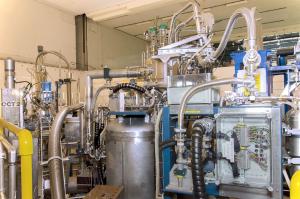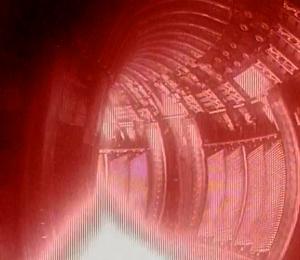"Technically the shattered pellet injector on JET acts as a disruption itself, but in the future, it would be used to pre-empt the disruption. We are testing it on JET because we are trying to scale it to ITER. DIII-D is a much smaller device than JET, and JET is a much smaller one than ITER. So, the purpose is in scaling in terms of plasma size and plasma energy to get closer to what ITER will be," said Baylor.
On JET, the injector is located between octants 1 and 2 on one of the vessel's vertical ports.
"I think one of the main things this new technology will perhaps tell us is the amount of shattered pellet injection material that ITER will require, and whether it needs to be injected from more than one location in the vessel," said Baylor.
The research team is also interested in learning how much neon is required to remove all the thermal energy and how symmetrically the energy is radiated around the torus. Other areas of study down the line will include the dissipation of runaway electrons. Runaways occur when electrons in the plasma are accelerated by a strong electric field around the plasma "donut" following a disruption.
On the other side of the world, a pair of shattered pellet injection devices have been installed on another tokamak—KSTAR in Korea—to explore the effects of multiple pellet sources. This configuration will allow the community to assess how the results from one system scale to multiple, simultaneous injections. A comparison between KSTAR and JET will allow a determination of size scaling for multiple injectors in much the same way as the team is presently comparing the shattered pellet injection results from DIII-D with those now being obtained on JET.
See a related news report (plus video) on the website of the Culham Centre for Fusion Energy.
Article prepared by US ITER with inputs from the Culham Centre for Fusion Energy, the UK Atomic Energy Authority, EUROfusion, the ITER Organization, and Oak Ridge National Laboratory.



